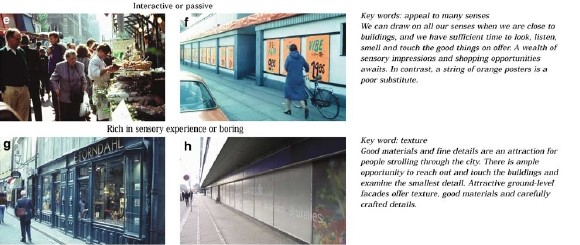"Parking, parking, parking" and "Driving, driving, driving"

Urban scenes at eye level, Part Two, Jan Gehl, Close Encounters with Buildings
For those of us who grew up watching the Brady Bunch on television, we remember the competition on the show between the middle and older sisters, Jan and Marcia, and Jan's lament that everything was about Marcia -- "Marcia, Marcia, Marcia."
I have a similar kind of response when listening to what I would consider whining by automobilists about the demands for what I consider to be overaccommodation.
"Parking, parking, parking" (a/k/a "privilege, privilege, privilege")
The proposed new Silver Spring library is across the street from a huge parking structure. Now there is a debate between the pro-urban design (against) and the pro-automobilist (for) over whether or not there should be a "skywalk" connecting the garage directly to the library.
Since active urban spaces have active ground floors, we urban design types think that just as how people go to the ground floor of the garage to exit to the stores, restaurants, cinemas, and other destinations in the area around the parking garage, that library patrons should do the same.
But Robert Oshel disagrees in his letter to the editor, "Silver Spring library design lacks parking," in the Gazette, demanding dedicated parking specifically for the library, or baring that, a skywalk.
Ironically, one of the examples Jane Jacobs uses in Death and Life of the Great American City to illustrate the concept of "mixed primary use" is having arts and culture uses located in central business districts and how the parking demands for these uses can be accommodated by the garages that during the day support the office buildings, that building dedicated parking facilities is a waste of money and space compared to using the same facilities for more hours of the day for a multiplicity of uses. (She was writing about Pittsburgh's downtown versus the development of a cultural center in the Oakland neighborhood.)
Skywalks are not great for cities. A graduate student did her thesis on skyways, finding them to be antithetical to great urbanism. See "University of Utah student compiles report on skybridges" from the Salt Lake City Deseret-News. From the article:
Hill, a graduate student at the University of Utah, is completing a master's degree in urban planning and is preparing to begin a Ph.D program. For nearly a year she researched skybridges in urban settings and compiled her findings in a 43-page report titled "Preserving Life of the Street."
"I felt like someone needed to speak up and say, 'This isn't the right concept for our Main Street,"' she said. "Someone needed to gather a body of information to say, 'This is a bad move. Let's come up with another option."'
Hill cites several sources supporting her conclusion that skybridges hinder street-level pedestrian activity and promote segregation and separation. "Planning and design professionals are all standing up and saying that skybridges don't work in this setting," she said.
Anyway, to be fair and equal, Mr. Oshel and others who make the same arguments need to advocate for all library users, including transit users, and should demand that transit users trips to the library be absorbed by the library too.
Labels: car culture and automobility, parking, public assets, public buildings, urban design/placemaking



0 Comments:
Post a Comment
<< Home